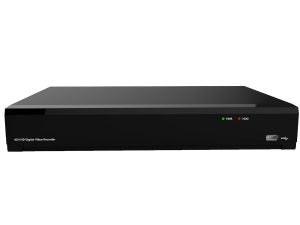What to look for when buying a CCTV Digital Video Recorder (DVR)

Q: I need to invest in a CCTV system to monitor my small shop. Whilst I am pretty set on the cameras that my system will use, I am finding it very difficult to find the right CCTV Recorder for my needs. There are so many specifications to look at, and I’m a bit unsure of which ones are most important for my needs, and which ones are less so. Simply put, I need to know just what to look for when buying a CCTV Digital Video Recorder. A: As it controls everything your security system does, choosing the right DVR is just as important when shopping for CCTV as choosing cameras. However, due to the range of options on the market this can often seem daunting. This is also not helped by some companies describing important features in different ways to each other. Breaking it down, these are the things you will need to consider when comparing models-
- Number of Video Channels– This is the number of cameras the DVR will be able to record at the same time. Most DVRs will have either 4, 8 or 16 video channels. Bear in mind that audio channels are separate, and some basic recorders will only take audio from one of the cameras.
- Resolution– Most recorders on the market will have a maximum resolution setting called “D1”, recording 720×576 pixels. Some newer recorders that work with IP cameras, however, will record in HD (1280×720). Importantly, the maximum resolution will not be of much use unless you also know the following…
- Frame Rate– For smooth recordings with no jerkiness, you will need a recorder that can work at 25fps. Unfortunately this is where it gets confusing. For best quality, you will want a recorder that can capture 25fps per channel, and whilst at maximum resolution. This is because some cheaper models advertise a fast frame rate, but it will only be at half resolution, not full D1. Whenever you buy a recorder, check in the specifications that the frame rate will be smooth at the top quality settings. The description “Real Time D1” should also ensure this is the case. Often, recorders will have the frame rate quoted as a total number for all of the channels, so an 8 channel recorder will be described as “200fps”.
-
Hard Drive Size– All DVRs will record footage to a built-in HDD, so make sure that the one you are buying is big enough for your needs. Lots of things affect recording time, from frame rate to resolution, to the number of cameras used, but as a general rule of thumb a 500GB drive- when used with 4 cameras at 25fps, recording D1 at standard quality- will hold about a week’s worth of footage. Most recorders will also have an option to upgrade to a larger storage size. Don’t forget, using Motion Detection can help make your storage last significantly longer.

Our DVRs are fitted with a wide range of connections - Online Access– These days, most DVRs will have a network connection, allowing you to view footage from cameras over the internet, or on a mobile device. There is however quite a bit of variation in compatibility for these features. For example, some allow you to control the recorder remotely, whereas some only allow you to watch a live feed. Also, available features my differ depending on whether you want to view it with a PC, Mac, iOS or Android device. Always check beforehand how the recorder will work with your specific equipment.
- Recording Modes– Almost every DVR will have motion detection and scheduled recording modes, but there is some variation in how much you can fine tune these modes.
- Extra Features– Many recorders will boast additional features that may be of use for your installation. Examples include HDMI output for Full HD monitoring, alarm inputs & outputs, and space to allow multiple Hard Drives to be installed. These are not usually a headline feature, but may be worth looking out for when comparing brands.

